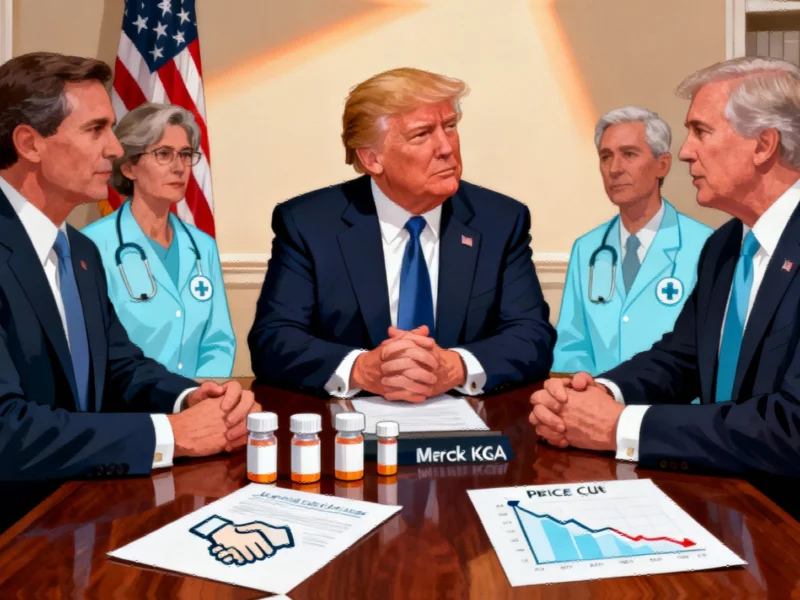Breaking: IVF Drug Price Reduction Agreement Reached
President Donald Trump and German pharmaceutical company Merck KGaA have announced a groundbreaking agreement that sources indicate will substantially lower costs for medications essential to in-vitro fertilization treatments. The arrangement, revealed during an Oval Office event, reportedly connects drug price reductions with protections from potential future tariffs.
Substantial Discounts for Fertility Medications
According to the report, Merck’s U.S. subsidiary EMD Serono has committed to providing an 84% combined discount on three key fertility drugs when used together in IVF cycles. The medications involved—Gonal-f, Ovidrel, and Cetrotide—represent crucial components of assisted reproductive technology treatments. Analysts suggest this could translate to approximately $2,200 in savings per treatment cycle for families pursuing fertility treatments.
“We’re also taking historic steps to vastly expand access to insurance coverage for fertility care, including IVF, something that, as you know, was not covered,” President Trump stated during the announcement, according to reports from the event.
Tariff Protection in Exchange for Price Reductions
The agreement reportedly includes provisions that would exclude Merck’s drugs from industry-specific tariffs if such measures are implemented in the future. In return, sources indicate the company has committed to investing in U.S. manufacturing and research operations. This arrangement follows similar deals the administration has reportedly negotiated with other pharmaceutical giants including Pfizer and AstraZeneca as part of broader efforts to lower prescription drug costs.
Industry observers note that this approach represents a novel use of trade policy to achieve domestic healthcare objectives. The report states that discounted medications will become available in early 2026 through a new platform called TrumpRX, designed to facilitate direct consumer purchases from manufacturers.
Expanding Insurance Coverage Options
In parallel developments, administration officials revealed plans to legalize supplemental insurance plans specifically designed for fertility treatments. Additionally, multiple federal agencies will reportedly issue guidance encouraging employers to offer IVF and infertility coverage directly to workers. According to the analysis, this approach allows small businesses to provide infertility benefits separately from comprehensive health plans.
The White House expects these measures will significantly expand access to fertility treatments, though officials clarified that no subsidies or mandates will accompany the new employer benefit options. This initiative builds upon an executive order President Trump signed in February directing the government to expand IVF access and reduce costs.
Regulatory Acceleration for New Treatments
Merck also announced plans to seek U.S. approval for its fertility drug Pergoveris through the FDA Commissioner’s National Priority Voucher program. This relatively new regulatory pathway reportedly aims to shorten review timelines from the typical 10-12 months down to just 1-2 months, potentially bringing new treatment options to market more rapidly.
As one of the world’s largest manufacturers of fertility treatments, Merck KGaA’s most popular product Gonal-f generated $973 million in sales last year, according to industry reports. The current agreement represents the latest development in the ongoing coverage of pharmaceutical pricing initiatives that have emerged as a central focus of the administration’s healthcare agenda.
This announcement comes amid broader economic developments including shifting investment patterns and increasing attention to technological security concerns across multiple sectors. Meanwhile, international observers are monitoring digital accessibility issues in various global markets alongside technology platform enhancements and cloud computing infrastructure developments that continue to reshape the digital landscape.
This article aggregates information from publicly available sources. All trademarks and copyrights belong to their respective owners.



